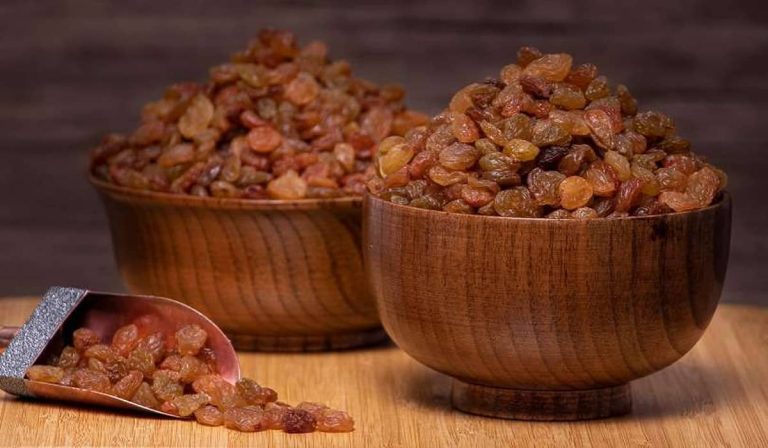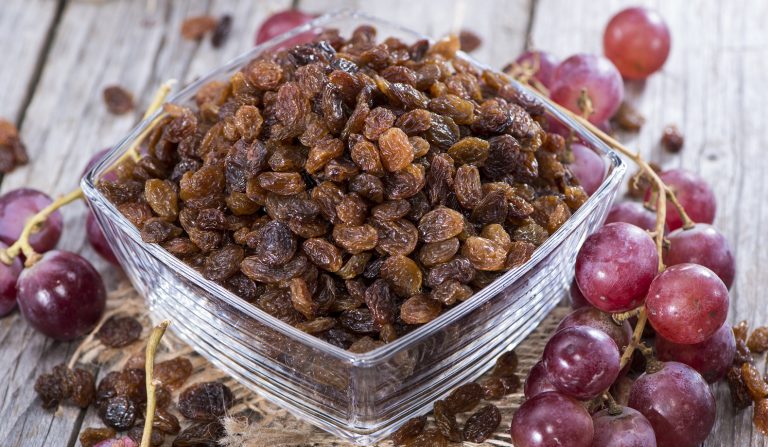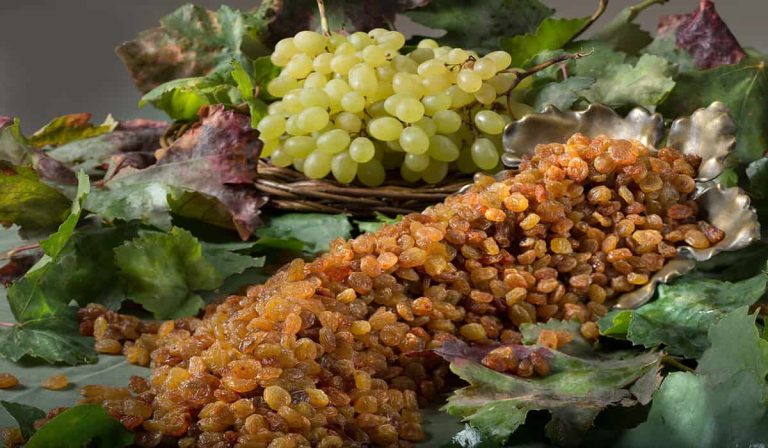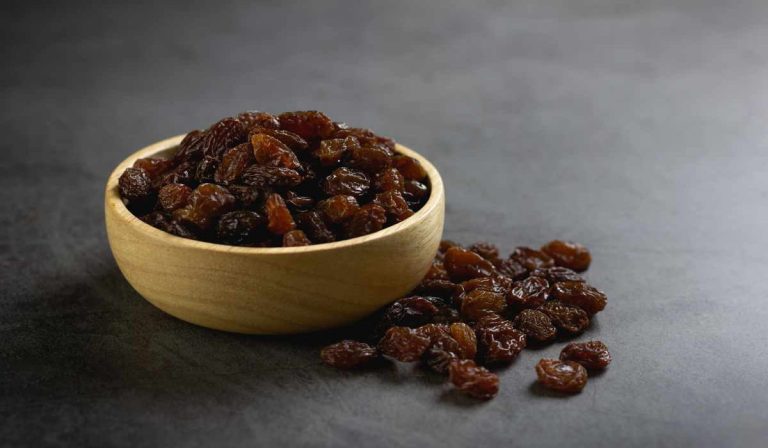Grape raisins are fermented, 100 grams of brown raisins have enough calories and are very useful for human health. During the drying process, the sugars and nutrients in the grapes are concentrated, resulting in a final product that is not only healthy, but also high in calories.
Raisins are thought to have originated in the Middle East, although they first became popular in Greece and Rome before spreading to the rest of Europe.
Raisins have a long history of use in a variety of contexts, including, but not limited to: as a form of payment. as a reward during sporting events; And as a treatment for diseases such as food poisoning. Raisins are widely available in most stores today and come in a variety of colors.
The drying method used is a key component in determining the different raisin colors that can be found. Golden-yellow raisins are usually used as an ingredient in baked goods, while red and brown raisins are usually eaten as snacks.
Raisins are a nutritious food that has undergone little processing and does not contain any chemicals or preservatives.

However, due to their high levels of sugar and calories, they should only be consumed in small amounts. Raisins are a delicious and convenient snack that can help you get a wider range of nutrients in your diet. Raisins can help you get a wider range of nutrients in your diet.
But because raisin is a dry fruit, it is not as moist as fresh grapes. It doesn’t feel as satisfying as eating a whole fruit, and it’s easy to overeat.
Follow this simple advice to eat very small amounts to avoid excessive calories in your diet.
Raisins have been shown to reduce the risk of heart disease by lowering blood pressure and blood sugar levels.
Eating raisins provides this protective effect. The high fiber content of raisins reduces LDL cholesterol, which is also called “bad” cholesterol.
As a result, the amount of pressure on the heart is reduced. In addition, raisins are an excellent source of potassium, which may be found in moderate levels. According to numerous studies, potassium deficiency can dramatically increase the risk of high blood pressure, cardiovascular disease, and stroke.

When we consume more sodium, which is common in many people’s diets today, our bodies need more potassium to function properly. Raisins are an excellent source of potassium because they are naturally low in sodium and low in salt.
Raisins contain much more antioxidants than other dried fruits such as apricots and blueberries. The drying process helps preserve these antioxidants and actually increases their effectiveness compared to non-dried grapes.
Compared to undried grapes, this is significant. Antioxidants protect cells from damage that would otherwise occur as a result of natural processes such as aging and lifestyle decisions.
Raisins are rich in phytonutrients and powerful antioxidants found in a wide range of fruits. This herbal combination has been proven to reduce the chances of developing chronic diseases such as diabetes, osteoporosis and cancer.
Several studies have shown that phytonutrients may also have properties that allow them to reduce inflammation, help reduce pain, and protect the brain.

raisins calories
Raisins are a good amount of calories in a way that is good for the body.
Compared to fresh grapes grown in the U.S., which have about 2.5 grams of carbs per 6-ounce serving, raisins have 11 grams of carbs per half ounce (14 grams), making them a higher-carb option ( 14.4). grams). 2 Grapes are offered in a variety of cultivars.
Currently, I can only provide a limited number. Although it has fewer calories than raisins, it has a lower fiber-to-calorie ratio. The amount of carbohydrates, calories and fiber in golden raisins is the same as in black raisins.
Seeded raisins have comparable carbohydrate and calorie profiles to regular raisins, but higher fiber levels.
However, most of the sugar in raisins comes from fructose, which has a significantly lower glycemic index than other forms of sugar. Raisins contain a significant amount of carbohydrates.
The glycemic index is a number that shows how much a certain food may raise blood sugar compared to pure glucose, which has a value of 100.
This figure is expressed as a ratio of the substance’s potential to increase blood sugar and the amount of pure glucose that can increase blood sugar.
The amount of blood sugar increase of a food depends not only on the level of blood sugar already present, but also on the amount of blood sugar consumed and the types of foods that can be consumed with it.

Glycemic loading is a strategy that tries to combine these two concepts. Therefore, some diets use a glycemic loading approach. Depending on the source, raisins may have a low, medium, or even high glycemic index. It is very important to remember that the glycemic index is a complex topic and people’s reactions to food can vary greatly.
If diabetics eat too many raisins, they are at risk of significant spikes in their blood sugar levels. This is because a serving of raisins contains a significant amount of carbohydrates. Even though raisins contain fat, they only contain a small amount of unsaturated fat.
Because raisins contain less than one gram of protein per ounce, they are a poor choice as a protein source. One ounce of raisins contains less than one gram of protein.
Vitamins and Minerals: If you eat one ounce of raisins, you have 4% of your daily potassium needs. Raisins are also rich in iron, B6, C, magnesium and calcium.
Although grapes lose some of their nutritional value during the drying process, raisins are still rich in fiber and antioxidants. All kinds of raisins are available for sale in our company. contact us.










